Zero- to One-Dimensional Zn24 Supraclusters: Synthesis, Structures and Detection Wavelength
Abstract
:1. Introduction
2. Experimental Methodology
2.1. Materials and Physical Measurements
2.2. Synthesis of L1H2–L5H2
2.3. Synthesis of Zn24
2.4. Synthesis of 1-D⊂Zn24
2.5. Single-Crystal X-ray Diffraction
3. Results and Discussion
3.1. Structural and Synthetic Details
3.2. Crystal Structures of Zn24 and 1-D⸦Zn24
3.3. Luminescent Properties
3.4. Detection Wavelength
3.5. Hirshfeld Surface Analysis of the Complex Zn24
4. Conclusions
Supplementary Materials
Author Contributions
Funding
Data Availability Statement
Conflicts of Interest
References
- Bao, S.S.; Zheng, L.M. Magnetic materials based on 3d metal phosphonates. Coord. Chem. Rev. 2016, 319, 63–85. [Google Scholar] [CrossRef]
- Han, S.D.; Zhao, J.P.; Liu, S.J.; Bu, X.H. Hydro(solvo)thermal synthetic strategy towards azido/formato-mediated molecular magnetic materials. Coord. Chem. Rev. 2016, 289–290, 32–48. [Google Scholar]
- Kitchen, J.A. Lanthanide-based self-assemblies of 2, 6-pyridyldicarboxamide ligands: Recent advances and applications as next-generation luminescent and magnetic materials. Coord. Chem. Rev. 2017, 340, 232–246. [Google Scholar] [CrossRef]
- Ashebr, T.G.; Li, H.; Ying, X.; Li, X.-L.; Zhao, C.; Liu, S.; Tang, J. Emerging trends on designing high-performance dysprosium (III) single-molecule magnets. ACS Mater. Lett. 2022, 4, 307–319. [Google Scholar] [CrossRef]
- Liu, J.Q.; Luo, Z.-D.; Pan, Y.; Singh, A.K.; Trivedi, M.; Kumar, A. Recent developments in luminescent coordination polymers: Designing strategies, sensing application and theoretical evidences. Coord. Chem. Rev. 2020, 406, 213145. [Google Scholar] [CrossRef]
- Zhou, Q.; Ren, G.; Yang, Y.; Wang, C.; Che, G.; Li, M.; Yu, M.-H.; Li, J.; Pan, Q. Fluorescence Thermometers Involving Two Ranges of Temperature: Coordination Polymer and DMSP Embedding. Inorg. Chem. 2023, 62, 16652–16658. [Google Scholar] [CrossRef] [PubMed]
- Yang, Z.; Xu, T.; Li, H.; She, M.; Chen, J.; Wang, Z.; Zhang, S.; Li, J. Zero-Dimensional Carbon Nanomaterials for Fluorescent Sensing and Imaging. Chem. Rev. 2023, 123, 11047–11136. [Google Scholar] [CrossRef]
- Zhang, C.; Qin, Y.; Ke, Z.; Yin, L.; Xiao, Y.; Zhang, S. Highly efficient and facile removal of As (V) from water by using Pb-MOF with higher stable and fluorescence. Appl. Organomet. Chem. 2023, 37, e7066. [Google Scholar] [CrossRef]
- Suess, R.J.; Winnerl, S.; Schneider, H.; Helm, M.; Berger, C.; De Heer, W.A.; Murphy, T.E.; Mittendorff, M. Role of transient reflection in graphene nonlinear infrared optics. Acs Photonics 2016, 3, 1069–1075. [Google Scholar] [CrossRef]
- Gwo, S.; Sun, L.; Li, X.; Chen, H.-Y.; Lin, M.-H. Nanomanipulation and controlled self-assembly of metal nanoparticles and nanocrystals for plasmonics. Chem. Soc. Rev. 2016, 45, 5672–5716. [Google Scholar] [CrossRef]
- Gwo, S.; Wang, C.Y.; Chen, H.Y.; Lin, M.H.; Sun, L.; Li, X.; Chen, W.L.; Chang, Y.M.; Ahn, H. Plasmonic metasurfaces for nonlinear optics and quantitative SERS. ACS Photonics 2016, 3, 1371–1384. [Google Scholar] [CrossRef]
- Yang, X.G.; Zhai, Z.M.; Lu, X.M.; Ma, L.F.; Yan, D. Fast crystallization-deposition of orderly molecule level heterojunction thin films showing tunable up-conversion and ultrahigh photoelectric response. ACS Cent. Sci. 2020, 6, 1169–1178. [Google Scholar] [CrossRef] [PubMed]
- Lee, S.W.; Choi, B.J.; Eom, T.; Han, J.H.; Kim, S.K.; Song, S.J.; Lee, W.; Hwang, C.S. Influences of metal, non-metal precursors, and substrates on atomic layer deposition processes for the growth of selected functional electronic materials. Coord. Chem. Rev. 2013, 257, 3154–3176. [Google Scholar] [CrossRef]
- Zhao, Y.X.; Yang, G.; Lu, X.M.; Yang, C.D.; Fan, N.N.; Yang, Z.T.; Wang, L.Y.; Ma, L.F. {Zn6} Cluster based metal–organic framework with enhanced room-temperature phosphorescence and optoelectronic performances. Inorg. Chem. 2019, 58, 6215–6221. [Google Scholar] [CrossRef] [PubMed]
- Pang, J.Y.; Gao, Q.; Yin, L.; Zhang, S.H. Synthesis and catalytic performance of banana cellulose nanofibres grafted with poly (ε-caprolactone) in a novel two-dimensional zinc (II) metal-organic framework. Int. J. Biol. Macromol. 2023, 224, 568–577. [Google Scholar] [CrossRef] [PubMed]
- Liu, J.; Yang, G.P.; Jin, J.; Wu, D.; Ma, L.F.; Wang, Y.Y. A first new porous d–p HMOF material with multiple active sites for excellent CO2 capture and catalysis. Chem. Commun. 2020, 56, 2395–2398. [Google Scholar] [CrossRef] [PubMed]
- Wu, Y.P.; Tian, J.W.; Liu, S.; Li, B.; Zhao, J.; Ma, L.F.; Li, D.S.; Lan, Y.Q.; Bu, X. Bi-Microporous metal–organic frameworks with cubane [M4 (OH) 4](M= Ni, Co) clusters and pore-space partition for electrocatalytic methanol oxidation reaction. Angew. Chem. Int. Ed. 2019, 58, 12185–12189. [Google Scholar] [CrossRef]
- Baig, M.M.F.A.; Ma, J.; Gao, X.; Khan, M.A.; Ali, A.; Farid, A.; Zia, A.W.; Noreen, S.; Wu, H. Exploring the robustness of DNA nanotubes framework for anticancer theranostics toward the 2D/3D clusters of hypopharyngeal respiratory tumor cells. Int. J. Biol. Macromol. 2023, 236, 123988. [Google Scholar] [CrossRef]
- Zhivkova, T.; Culita, D.C.; Abudalleh, A.; Dyakova, L.; Mocanu, T.; Madalan, A.M.; Georgieva, M.; Miloshev, G.; Hanganu, A.; Marinescu, G.; et al. Homo-and heterometallic complexes of Zn (ii),{Zn (ii) Au (i)}, and {Zn (ii) Ag (i)} with pentadentate Schiff base ligands as promising anticancer agents. Dalton Trans. 2023, 52, 12282–12295. [Google Scholar] [CrossRef]
- Zhang, Y.; Yuan, S.; Day, G.; Wang, X.; Yang, X.; Zhou, H.C. Luminescent sensors based on metal-organic frameworks. Coord. Chem. Rev. 2018, 354, 28–45. [Google Scholar] [CrossRef]
- Yu, C.X.; Hu, F.L.; Song, J.G.; Zhang, J.L.; Liu, S.S.; Wang, B.X.; Meng, H.; Liu, L.; Ma, L.F. Ultrathin two-dimensional metal-organic framework nanosheets decorated with tetra-pyridyl calix [4] arene: Design, synthesis and application in pesticide detection. Sens. Actuat. B-Chem. 2020, 310, 127819. [Google Scholar] [CrossRef]
- Wang, S.T.; Zheng, X.; Zhang, S.H.; Li, G.; Xiao, Y. A study of GUPT-2, a water-stable zinc-based metal–organic framework as a highly selective and sensitive fluorescent sensor in the detection of Al3+ and Fe3+ ions. CrystEngComm 2021, 23, 4059–4068. [Google Scholar] [CrossRef]
- Avila, R.J.; Emery, D.J.; Pellin, M.J.; Martinson, B.F.A.; Farha, K.O.; Hupp, T.J. Porphyrins as Templates for Site-Selective Atomic Layer Deposition: Vapor Metalation and in Situ Monitoring of Island Growth. ACS Appl. Mater Inter. 2016, 8, 19853–19859. [Google Scholar] [CrossRef] [PubMed]
- Gao, P.; Ma, H.; Wu, Q.; Qiao, L.; Volinsky, A.A.; Su, Y.J. Size-dependent vacancy concentration in nickel, copper, gold, and platinum nanoparticles. Phys. Chem. C 2016, 120, 17613–17619. [Google Scholar] [CrossRef]
- Kumar, R.; Kaur, N.; Kaur, R.; Kaur, N.; Sahoo, S.C.; Nanda, P.K. Temperature controlled synthesis and transformation of dinuclear to hexanuclear zinc complexes of a benzothiazole based ligand: Coordination induced fluorescence enhancement and quenching. J. Mol. Struct. 2022, 1265, 133300. [Google Scholar] [CrossRef]
- Islam, S.; Tripathi, S.; Hossain, A.; Seth, S.K.; Mukhopadhyay, S.J. pH-induced structural variations of two new Mg (II)-PDA complexes: Experimental and theoretical studies. J. Mol. Struct. 2022, 1265, 133373. [Google Scholar] [CrossRef]
- Feng, C.; Zhu, Y.Q.; Huang, H.H.; Zhao, H.J. A Triazolate-Supported Fe3(μ3-O) Core: Crystal Structure, Fluorescence, and Hirshfeld Surface Analysis. J. Clust. Sci. 2016, 27, 1181–1190. [Google Scholar] [CrossRef]
- Sebastian, S.; Tim, S.; Mariam, B.; Jan, V.L.; Arif, N.M.; Paul, K.G. A planar decanuclear cobalt (II) coordination cluster. Inorg. Chim. Acta 2018, 482, 522–525. [Google Scholar]
- Gaponik, P.N.; Voitekhovich, S.V.; Ivashkevich, O.A. Metal derivatives of tetrazoles. Russ. Chem. Rev. 2010, 37, 507–603. [Google Scholar]
- Li, J.R.; Yu, Q.; Sañudo, E.C.; Tao, Y.; Bu, X.H. An azido–CuII–triazolate complex with utp-type topological network, showing spin-canted antiferromagnetism. Chem. Commun. 2007, 25, 2602–2604. [Google Scholar] [CrossRef]
- Tong, X.L.; Hu, T.L.; Zhao, J.P.; Wang, Y.K.; Zhang, H.; Bu, X.H. Chiral magnetic metal–organic frameworks of MnII with achiral tetrazolate-based ligands by spontaneous resolution. Chem. Commun. 2010, 46, 8543–8545. [Google Scholar] [CrossRef]
- Bai, Y.; Dou, Y.; Xie, L.H.; Rutledge, W.; Li, J.R.; Zhou, H.C. Zr-based metal–organic frameworks: Design, synthesis, structure, and applications. Chem. Soc. Rev. 2016, 45, 2327. [Google Scholar] [CrossRef] [PubMed]
- Kang, X.M.; Tang, M.H.; Yang, G.L.; Zhao, B. Cluster/cage-based coordination polymers with tetrazole derivatives. Coord. Chem. Rev. 2020, 422, 213424. [Google Scholar] [CrossRef]
- Liang, M.X.; Ruan, C.Z.; Sun, D.; Kong, X.J.; Ren, Y.P.; Long, L.S.; Huang, R.B.; Zheng, L.S. Solvothermal synthesis of four polyoxometalate-based coordination polymers including diverse Ag (I) · π interactions. Inorg. Chem. 2014, 53, 897–902. [Google Scholar] [CrossRef] [PubMed]
- Sheldrick, G.M. Crystal structure refinement withSHELXL. Acta Cryst. 2015, A71, 3–8. [Google Scholar] [CrossRef] [PubMed]
- Dolomanov, O.V.; Bourhis, L.J.; Gildea, R.J.; Howard, J.A.K.; Puschmann, H.J. OLEX2: A complete structure solution, refinement and analysis program. Appl. Cryst. 2009, 42, 339–341. [Google Scholar] [CrossRef]
- Wei, G.H.; Yang, J.; Ma, J.F.; Liu, Y.Y.; Li, S.L.; Zhang, L.P. Syntheses, structures and luminescent properties of zinc (II) and cadmium (II) coordination complexes based on new bis (imidazolyl) ether and different carboxylate ligands. Dalton Trans. 2008, 23, 3080–3092. [Google Scholar] [CrossRef]
- Su, Z.; Fan, J.; Okamura, T.A.; Chen, M.S.; Chen, S.S.; Sun, W.Y. Interpenetrating and self-penetrating zinc (II) complexes with rigid tripodal imidazole-containing ligand and benzenedicarboxylate. Cryst. Growth Des. 2010, 10, 1911–1922. [Google Scholar] [CrossRef]
- Tian, Y.; Wang, Y.; Xu, Y.; Liu, Y.; Li, D.; Fan, C. A highly sensitive chemiluminescence sensor for detecting mercury (II) ions: A combination of Exonuclease III-aided signal amplification and graphene oxide-assisted background reduction. Sci. China Chem. 2015, 58, 514–518. [Google Scholar] [CrossRef]
- Gao, W.Y.; Chrzanowski, M.; Ma, S. Metal–metalloporphyrin frameworks: A resurging class of functional materials. Chem. Soc. Rev. 2015, 45, 1602–1608. [Google Scholar] [CrossRef]
- Zhang, Q.; Wang, J.; Kirillov, A.M.; Dou, W.; Xu, C.; Xu, C.; Yang, L.; Fang, R.; Liu, W. Multifunctional Ln–MOF luminescent probe for efficient sensing of Fe3+, Ce3+, and acetone. ACS Appl. Mater. Inter. 2018, 10, 23976–23986. [Google Scholar] [CrossRef]
- Chen, Y.; Yang, T.; Pan, H.; Yuan, Y.; Chen, L.J. Photoemission mechanism of water-soluble silver nanoclusters: Ligand-to-metal–metal charge transfer vs strong coupling between surface plasmon and emitters. J. Am. Chem. Soc. 2014, 136, 1686–1689. [Google Scholar] [CrossRef]
- Huo, P.; Hou, J.; Lei, Z.; Chen, Q.-Y.; Dai, T. Ligand-to-ligand charge transfer within metal–organic frameworks based on manganese coordination polymers with tetrathiafulvalene-bicarboxylate and bipyridine ligands. Inorg. Chem. 2016, 55, 6496–6503. [Google Scholar] [CrossRef] [PubMed]
- Spackman, M.A.; Jayatilaka, D. Hirshfeld surface analysis. CrystEngComm 2009, 11, 19–32. [Google Scholar] [CrossRef]
- Sama, F.; Ansari, L.A.; Raizada, M.; Ahmad, M.; Nagaraja, C.M.; Shahid, M.; Kumar, A.; Khan, K.; Siddiqi, Z.A. Design, structures and study of non-covalent interactions of mono-, di-, and tetranuclear complexes of a bifurcated quadridentate tripod ligand, N-(aminopropyl)-diethanolamine. New. J. Chem. 2017, 41, 1959–1972. [Google Scholar] [CrossRef]
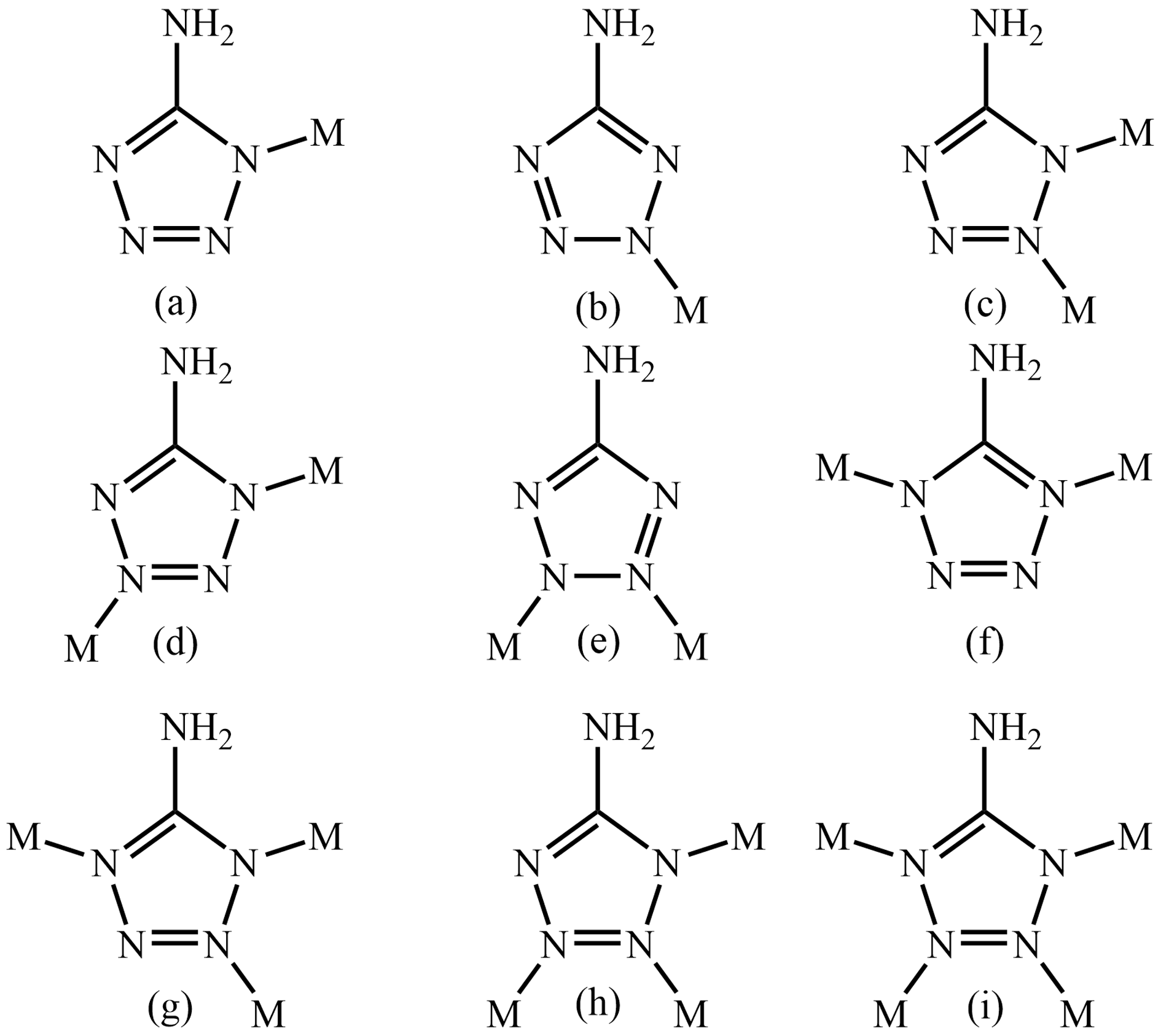
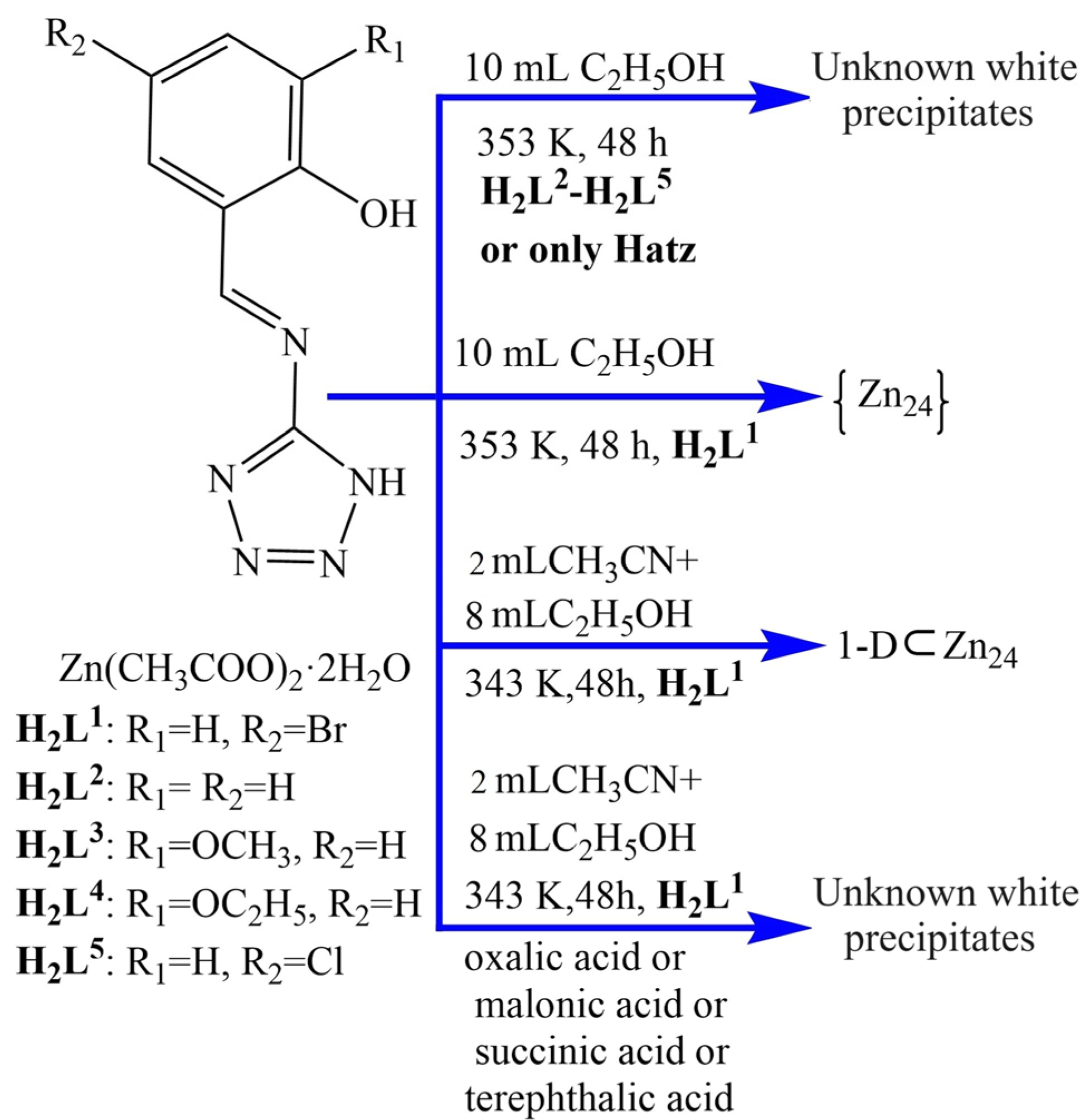
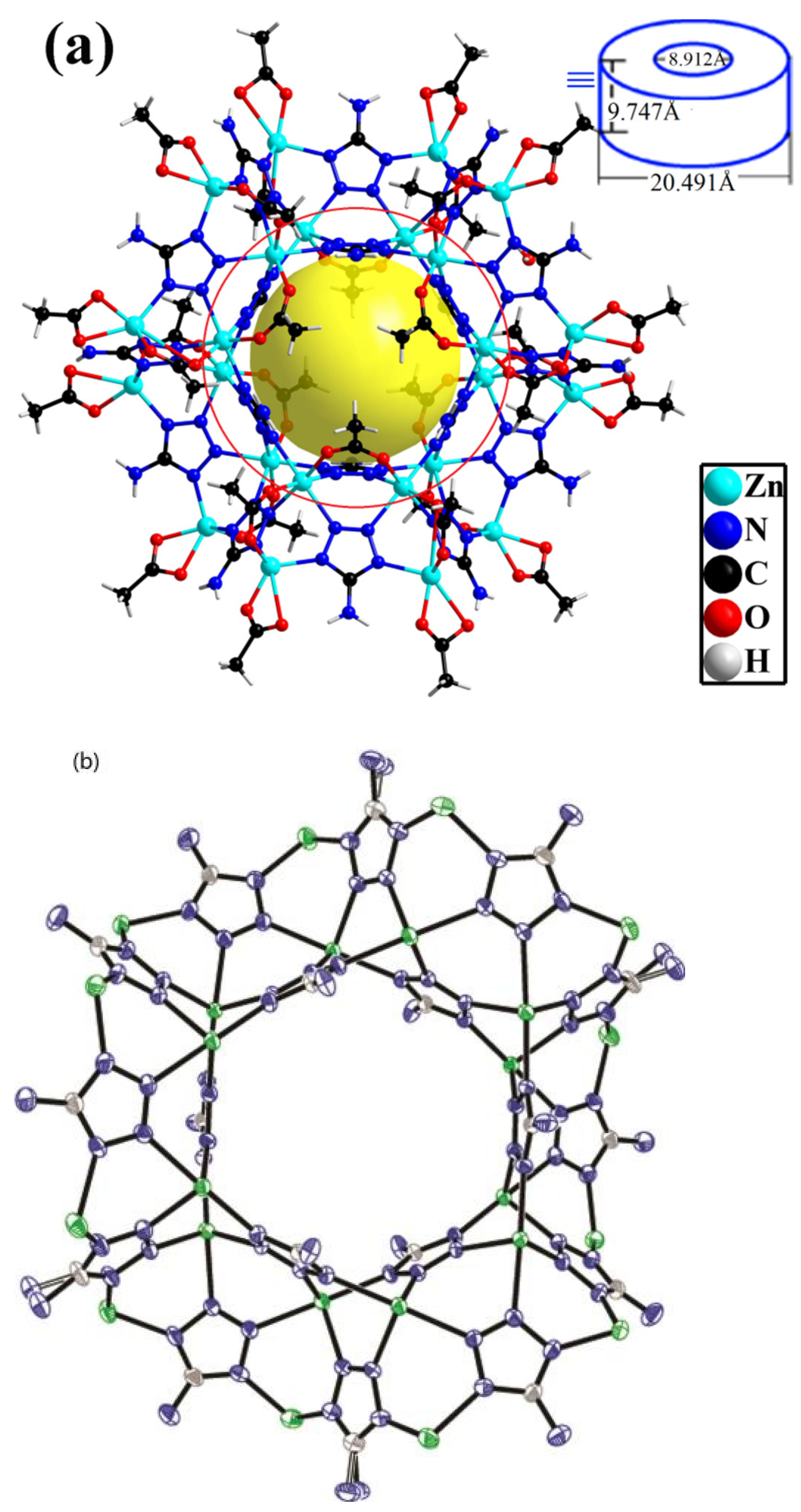
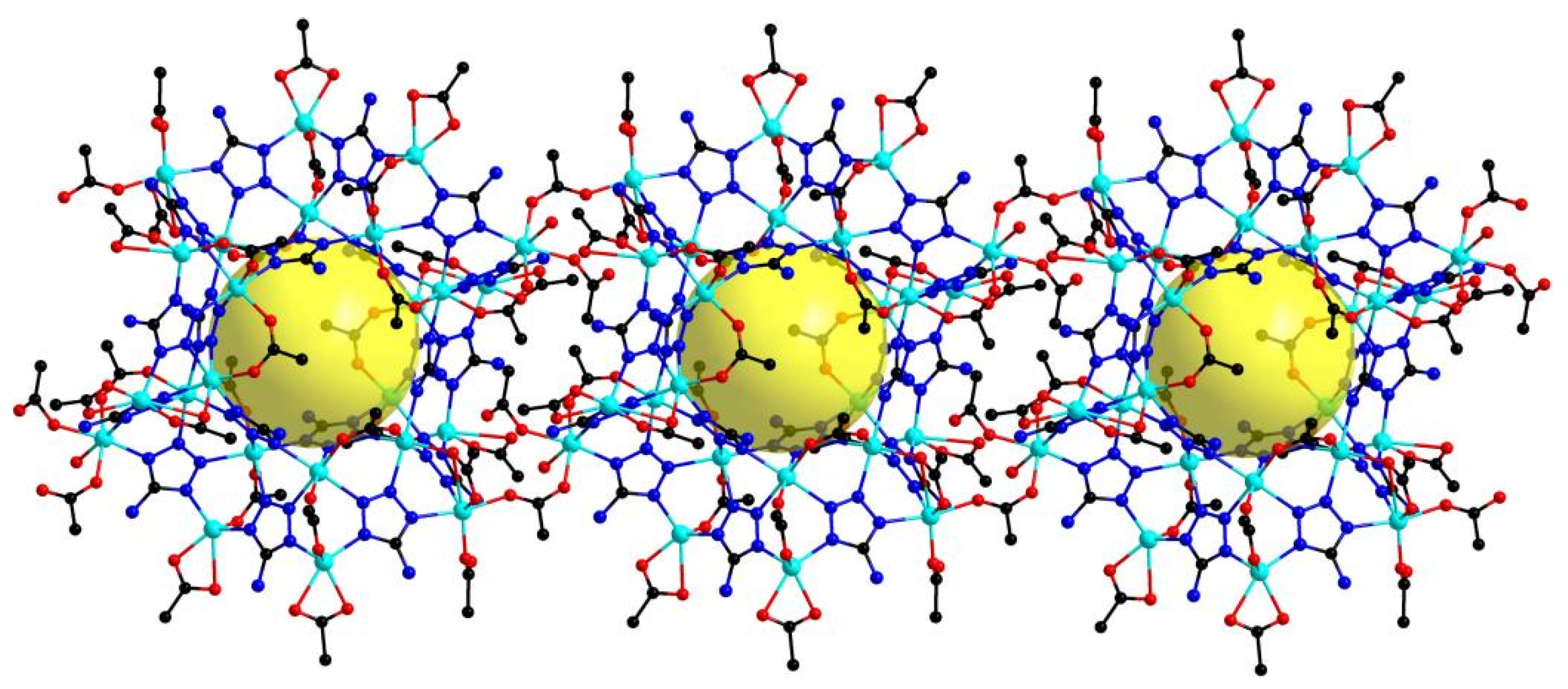
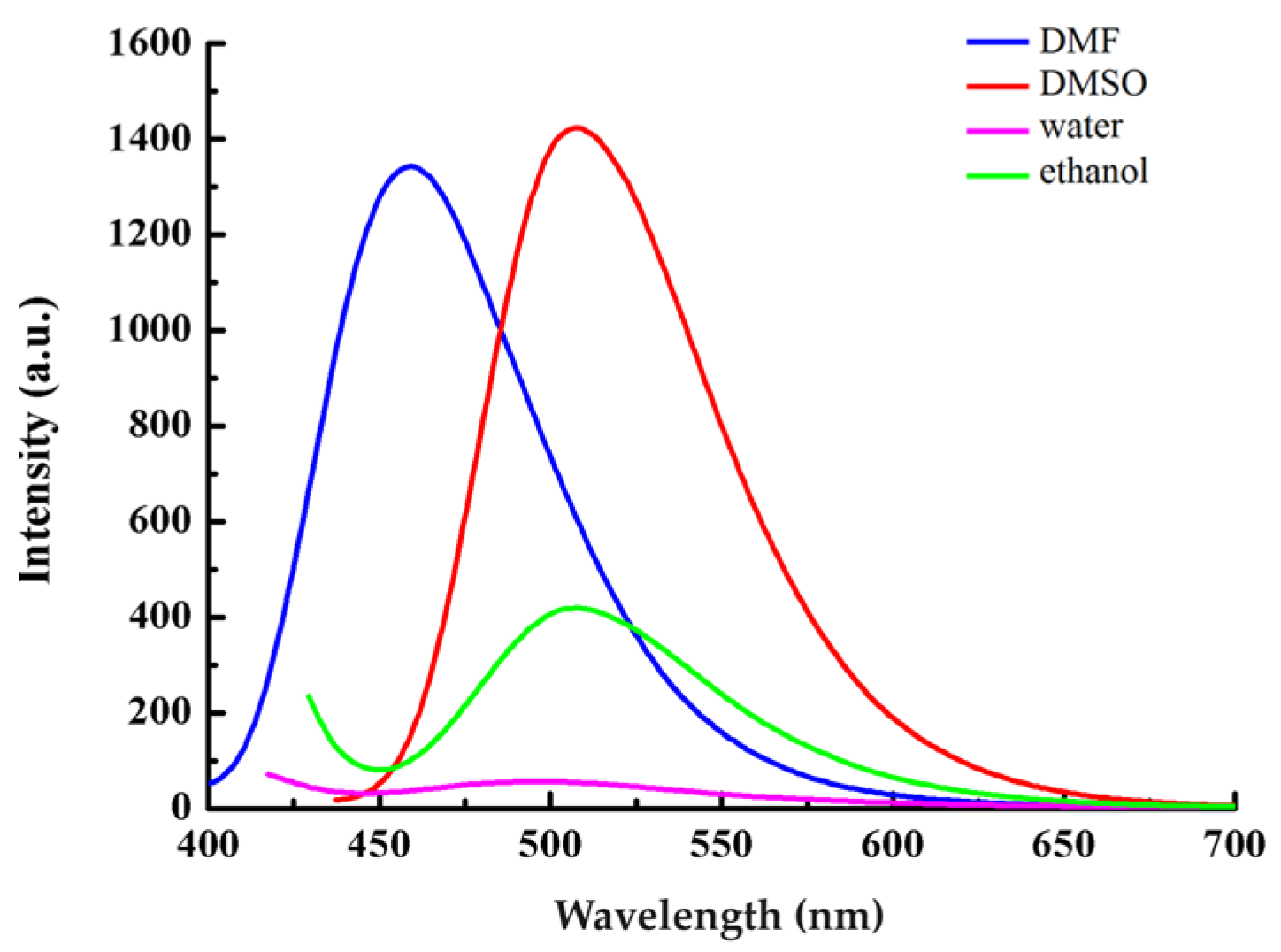
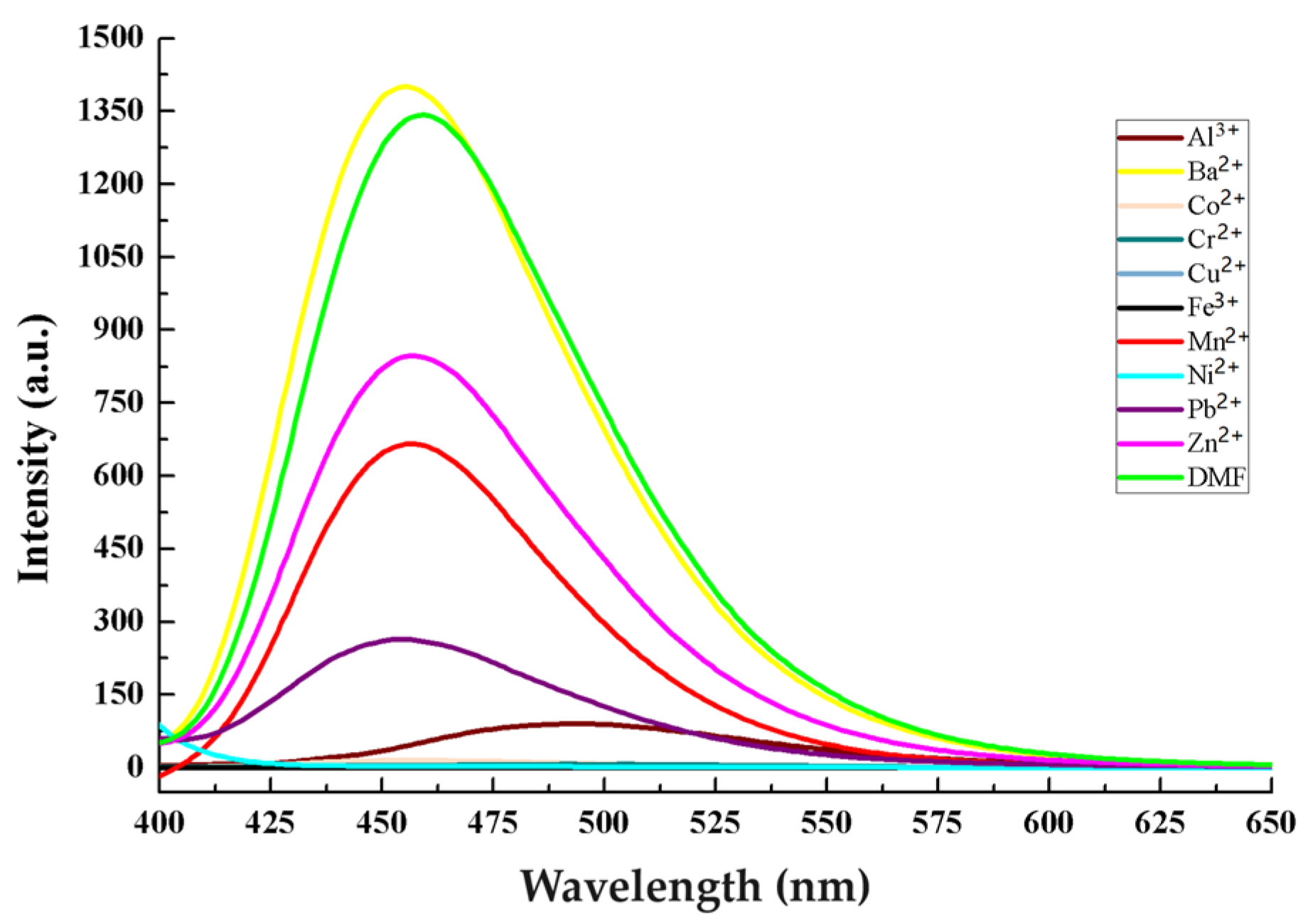

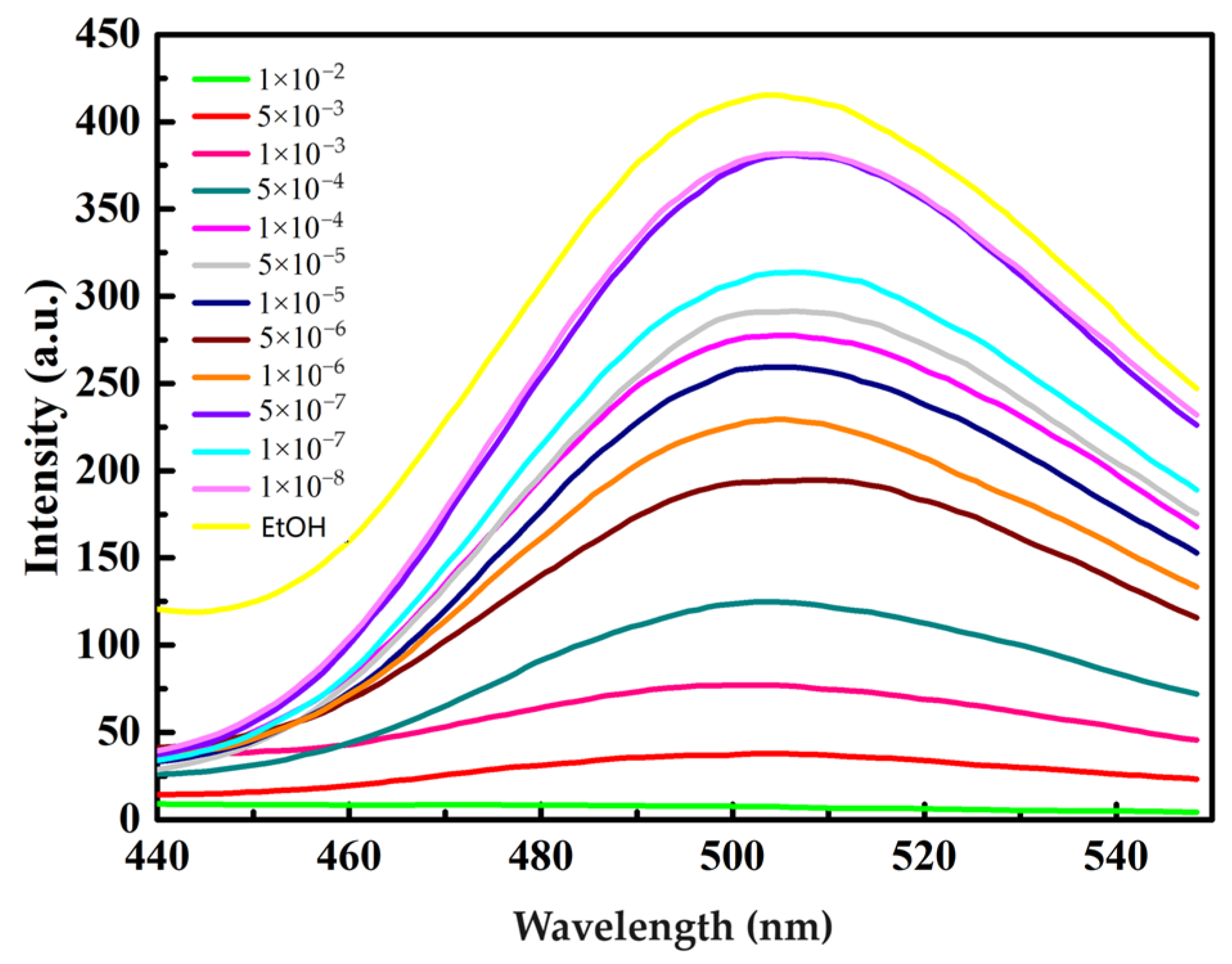
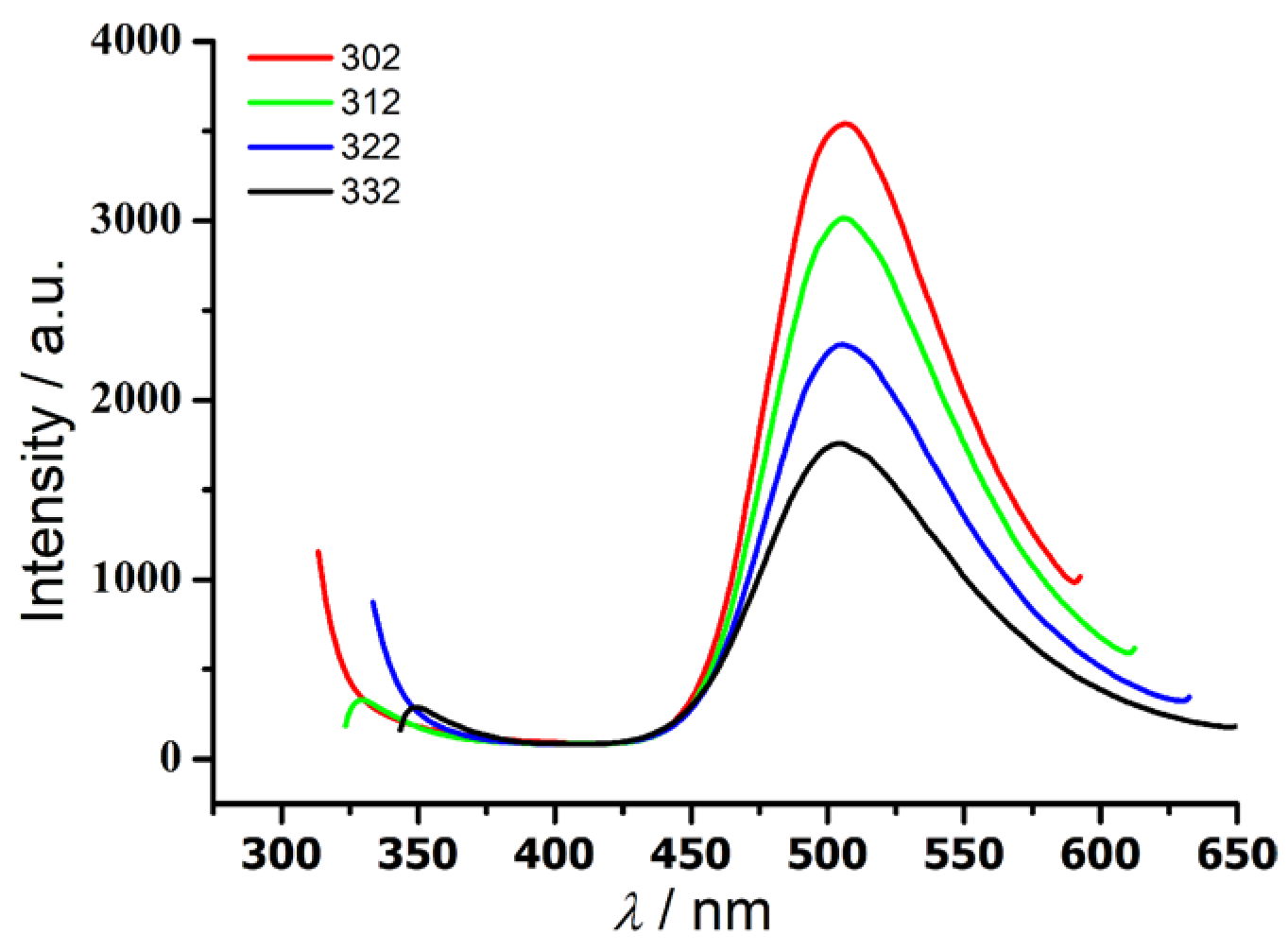
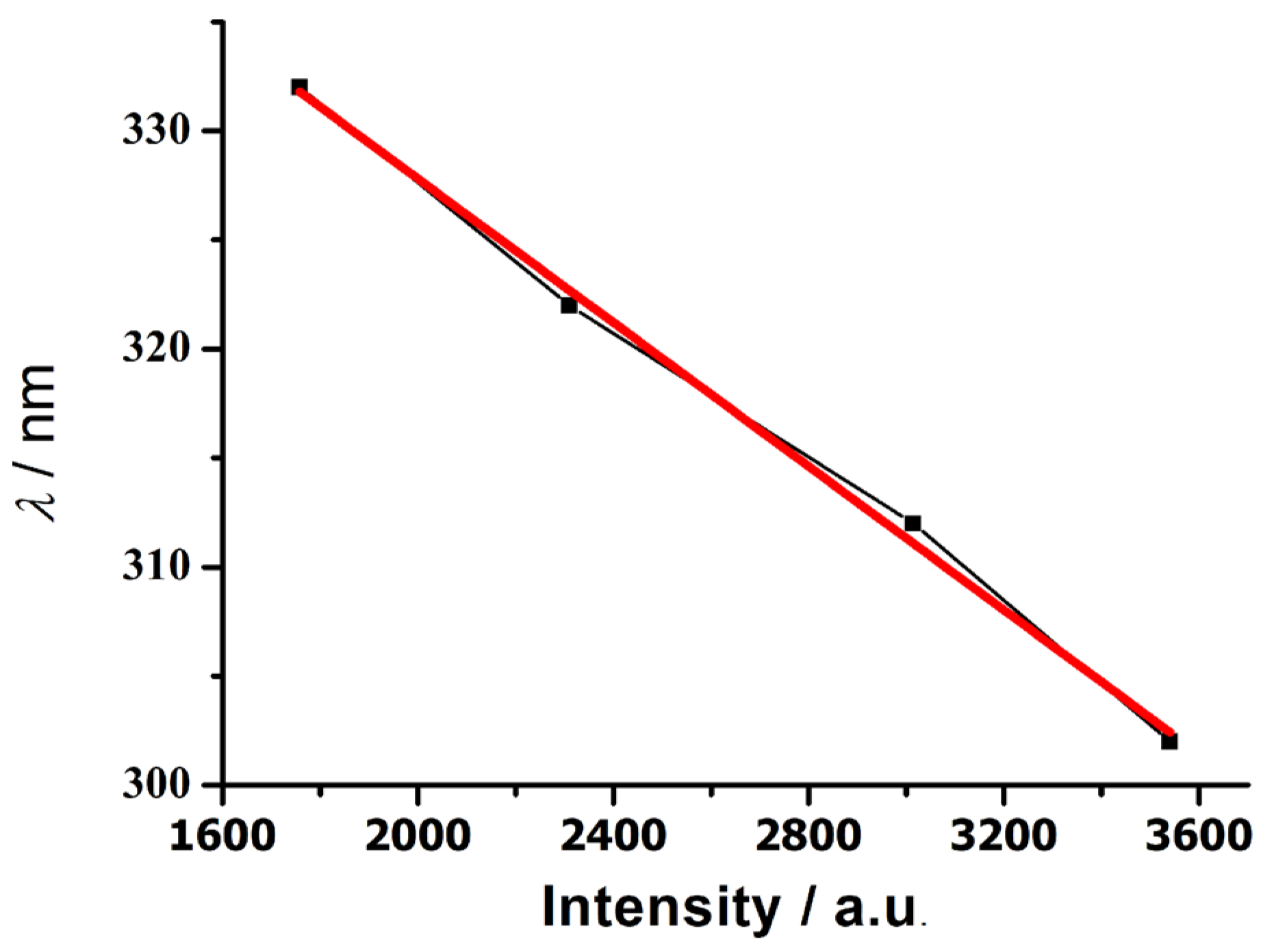


| Complexes | Zn24 | 1-D⊂Zn24 |
|---|---|---|
| Formula | C78H138N90O66Zn24 | C82H150N90O68 Zn24 |
| Formula weight | 4961.66 | 5053.79 |
| Crystal system | Monoclinic | triclinic |
| Crystal size (mm) | 0.25 × 0.21 × 0.16 | 0.21 × 0.18 × 0.13 |
| Space group | P21/n | Pī |
| a (Å) | 20.264(1) | 16.718(1) |
| b (Å) | 23.996(1) | 17.449(1) |
| c (Å) | 21.663(1) | 19.054(1) |
| α (°) | 90.00 | 70.651(3) |
| β (°) | 108.738(4) | 80.304(3) |
| γ (°) | 90.00 | 70.651(3) |
| V (Å3) | 9975.3(6) | 5062.8(3) |
| F(000) | 4968 | 2536 |
| Z | 2 | 1 |
| Dc (g cm–3) | 1.646 | 1.658 |
| μ (mm–1) | 2.917 | 2.877 |
| θ range (°) | 3.16, 25.01 | 3.30,25.01 |
| Ref. meas./indep. | 74,768, 17,433 | 39,347, 17,765 |
| Obs. ref. [I > 2σ(I)] | 11,953 | 11,553 |
| Rint | 0.0520 | 0.0473 |
| R1 [I ≥ 2σ (I)] a | 0.0600 | 0.0673 |
| ωR2(all data) b | 0.1934 | 0.2037 |
| Goof | 1.039 | 1.041 |
| Δρ(max, min) (e Å−3) | 1.001, −0.867 | 1.126, −0.694 |
Disclaimer/Publisher’s Note: The statements, opinions and data contained in all publications are solely those of the individual author(s) and contributor(s) and not of MDPI and/or the editor(s). MDPI and/or the editor(s) disclaim responsibility for any injury to people or property resulting from any ideas, methods, instructions or products referred to in the content. |
© 2023 by the authors. Licensee MDPI, Basel, Switzerland. This article is an open access article distributed under the terms and conditions of the Creative Commons Attribution (CC BY) license (https://creativecommons.org/licenses/by/4.0/).
Share and Cite
Chen, Y.; Chen, Z.; Wang, J.; Ma, X.; Yuan, L.; Zhang, S.; Tang, F. Zero- to One-Dimensional Zn24 Supraclusters: Synthesis, Structures and Detection Wavelength. Nanomaterials 2023, 13, 3058. https://doi.org/10.3390/nano13233058
Chen Y, Chen Z, Wang J, Ma X, Yuan L, Zhang S, Tang F. Zero- to One-Dimensional Zn24 Supraclusters: Synthesis, Structures and Detection Wavelength. Nanomaterials. 2023; 13(23):3058. https://doi.org/10.3390/nano13233058
Chicago/Turabian StyleChen, Yating, Zhonghang Chen, Jiming Wang, Xuandi Ma, Linyu Yuan, Shuhua Zhang, and Fushun Tang. 2023. "Zero- to One-Dimensional Zn24 Supraclusters: Synthesis, Structures and Detection Wavelength" Nanomaterials 13, no. 23: 3058. https://doi.org/10.3390/nano13233058
APA StyleChen, Y., Chen, Z., Wang, J., Ma, X., Yuan, L., Zhang, S., & Tang, F. (2023). Zero- to One-Dimensional Zn24 Supraclusters: Synthesis, Structures and Detection Wavelength. Nanomaterials, 13(23), 3058. https://doi.org/10.3390/nano13233058






